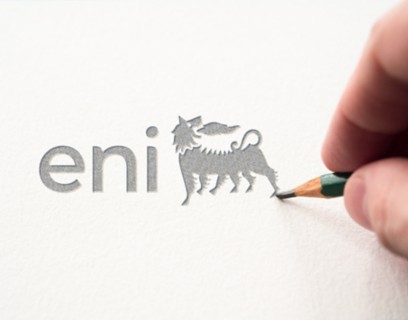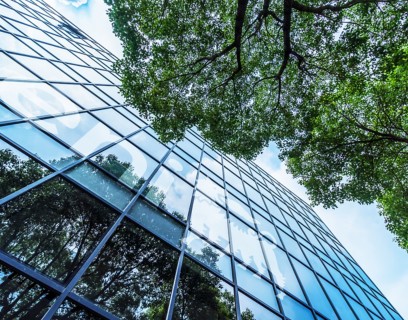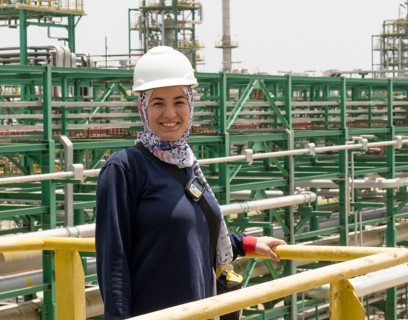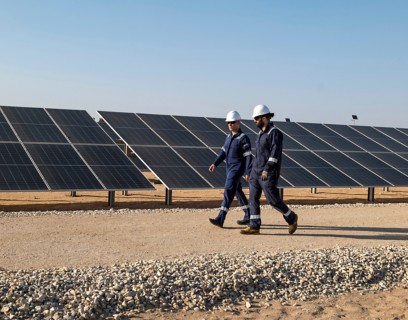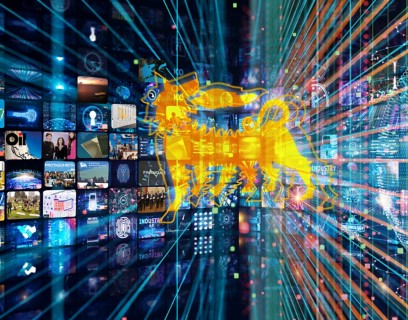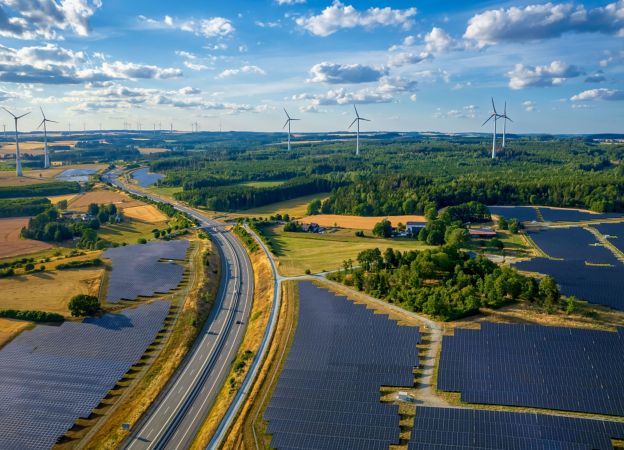
Or , our new artificial intelligence tool.
MyEni Login
Intelligent automation: robotics for the future of energy
We use advanced technologies to optimise operational efficiency, raise the level of safety at work and improve data quality.

Robotics for Eni
At Eni we have a competence centre that develops technologies for the automation and digitalisation of plants: from fixed or mobile distributed sensors equipped with their own network for data collection, to robots used on land, at sea and in the air, and data processing systems for engineering use and for managing alarms and related recommendations for action, even in real time. The initiatives are applied in different contexts, in accordance with the technology development plan:
- integrity inspection of onshore and offshore assets
- greenhouse gas (GHG) monitoring
- CO2 capture and storage (CCUS)
- environmental monitoring, including forestry and agro-energy scenarios
- transition in energy fusion and renewable energies




Industrialisation
Air protection
Capture and storage of CO₂
Natural gas and other hydrocarbons production
Water protection
Workers' safety
What is it for?
We use the expertise we have established in the industry, applying robotics in our plants to improve safety in the workplace, reducing the exposure of operators to hazardous and remote environments and to allow workers access to unreachable areas. We design robots to increase the quality, quantity and reliability of environmental monitoring, industrial operations and asset integrity data; our systems aim to optimise operations in terms of cost and time and to ensure faster and more accurate asset maintenance.
Initiatives under way
Robots for applications in tanks and pipelines
We are developing robotic systems to inspect static equipment in operation to avoid operator access to confined and high-risk spaces and to reduce production downtime during inspections.
Aerial robots
We use both in-house developed and commercial aerial technologies. These include: multi-rotor resident drones for monitoring potential emission points, drones for the non-destructive testing of equipment and pipe racks, aerial robots for the inspection and monitoring of conventional and renewable assets, with the application of artificial intelligence for automatic anomaly detection. In addition, we use fixed-wing drones with vertical take-off and landing to monitor pipelines and forest areas, aerial robots used in precision agriculture and drug delivery in remote areas, and resident drones for surveillance patrols.
Ground robots
We use four-legged robots capable of accessing congested spaces or hazardous areas to perform visual, thermal and acoustic analyses and to identify methane emissions.
Robots with innovative sensors
We use IoT (Internet of Things) sensors for environmental monitoring and fugitive emission detection (CH₄, CO₂) and sensors to assess asset integrity, which can identify abnormal vibrations, the presence of corrosion and assess the status of tanks and lines.
Underwater robots
Clean Sea is the advanced subsea robot developed by Eni for inspecting and monitoring the marine environment.
Robots for magnetic confinement fusion plants
We have developed manipulator robots, i.e. with robotic arms, used to replace functional modules in fusion experiments or damaged first-wall modules.
Our developments in robotics
-
5collaborations
under way to study robotic systems with Universities, Research Centres and Start-ups
-
7types of robots
developed or under development
-
11categories
of submarine missions possible with Clean Sea
-
>1000km
of underwater pipelines inspected by Clean Sea in its different campaigns
-
7kind
of inspections achievable with robotic as opposed to manual systems
GSN: Eni’s technology to monitor methane emissions
Eni's Gas Sensor Node continuously monitors and measures fugitive methane emissions, enabling targeted interventions and regulatory compliance.
How does monitoring with robots work?
Aerial monitoring
We have developed the ATEX ROGER K3 drone that performs autonomous missions in very complex areas: it takes off from a special charging and control station, flies unmanned along pre-programmed routes, scans specific elements to detect potential anomalies, returns and connects to the docking station. It stays here when not in operation, recharging the batteries and downloading the acquired data, which is then processed centrally. After several applications at Italian sites, the drone also carried out an operational campaign in Congo.
Certified in November 2022 to operate in areas of moderate risk due to the presence of potentially explosive gases or vapours (ATEX zone 2), this drone is able to fly in the absence of a GPS signal.
Marine monitoring
Clean Sea is the underwater robot developed by Eni, designed to perform simultaneous structural integrity and quality surveys of the underwater environment. The system has been fully operational since 2016 and has been successfully deployed in several campaigns in the Mediterranean Sea, the North Sea and the Caspian Sea.
The robot is based on interchangeable e-pods, mission modules integrating a series of sensors and analysers dedicated to specific monitoring tasks, designed to be installed on the carrier vehicle. For example, there are e-pods dedicated to water sampling, detailed visual analysis, pollutant analysis, geophysical surveys and 3D acoustic reconstructions. These modules also adopt a hybrid ROV/AUV (Remotely Operated Vehicle)/(Autonomous Underwater Vehicle) architecture that allows them to be used in remote-controlled form from a support vessel or in fully autonomous mode.
The collaborations
We have a multidisciplinary working group that deals with all aspects of a prototype's lifecycle (from initial requirements to realisation and field testing) and we have active collaborations with universities, research centres and a number of strategic technology suppliers in order to have greater production flexibility and direct access to the market.
Research and technological innovation
Our Research Centres form a network of laboratories and pilot plants that support each of our businesses.
